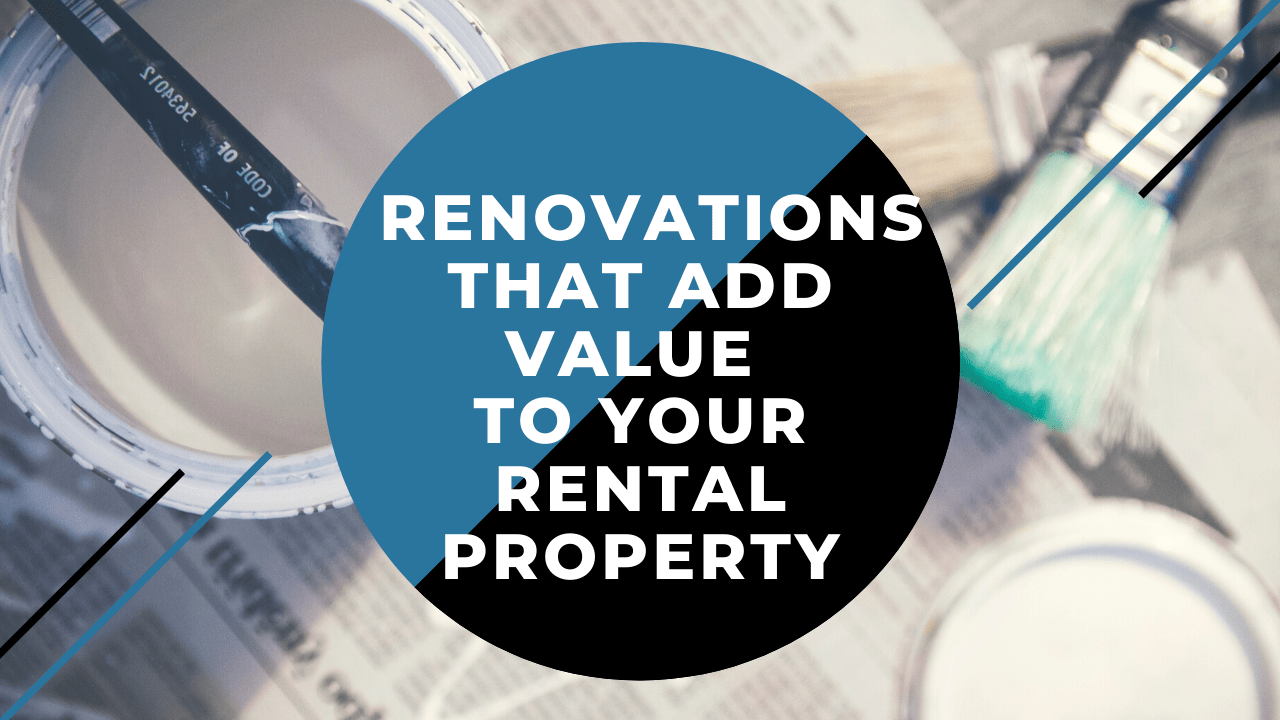
Renovating a rental property may seem like an expense you’d rather avoid. However, the right renovations can be worth the renovation costs, – potentially attracting higher-paying tenants, improving your property’s rental value and increasing your cash flow.
As professional property managers in Kelowna, BC, we’ve found that the following rental renovations are generally worth the investment for property owners everywhere.
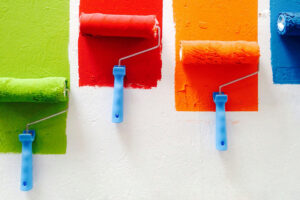
1. Make Your Home Look New With Fresh Paint
New paint makes a big difference in any rental unit. It looks clean and fresh. Good tenants aren’t going to rent your property when there are smudges and scratches in the paint.
Many landlords touch up the paint on their walls between tenants. This is one way to make a small fix, but painting the entire wall – or even better, the entire property – will really provide an upgrade that doesn’t cost a lot of money or take a lot of time. It gives you the opportunity to present a clean, updated home that tenants will be eager to rent.
Here are a few ideas for fresh paint:
- Bold Color Choices: Select a vibrant and complementary color for an accent wall in key living spaces, such as the living room or bedroom. This not only adds visual interest but also allows tenants to personalize their space.
- Temporary Wallpaper: Experiment with temporary peel-and-stick wallpaper to create a striking accent wall without the commitment. This allows for easy updates and customization, catering to diverse tenant preferences.
- Half-and-Half Color Blocking: Paint the bottom half of the wall in a different color than the top half to achieve a contemporary color-blocking effect. This technique adds a stylish and visually appealing dimension to rooms.
2. Invest in Hard Surface Flooring
If you’ve been steam-cleaning the carpets in your rental property year after year, it’s time to try something else. While installing new carpet is one option, why not consider a hard surface flooring? You don’t have to buy something expensive like hardwoods, but a laminate floor, tile, or even vinyl can make the home look new and much cleaner to your future tenant.
- Luxury Vinyl Planks (LVP): Embrace the luxurious look of hardwood with luxury vinyl planks. These durable and water-resistant planks come in various wood grain patterns, offering a cost-effective alternative to traditional hardwood flooring.
- Vinyl Tile Options: Install vinyl tiles that replicate the appearance of ceramic or stone tiles. These options are not only budget-friendly but also resistant to moisture, making them suitable for kitchens, bathrooms, and entryways.
- Wood-Look Porcelain Tiles: Embrace the warmth and elegance of wood without the maintenance concerns by opting for wood-look porcelain tiles. These tiles offer durability and resistance to moisture, making them ideal for various spaces in the home.
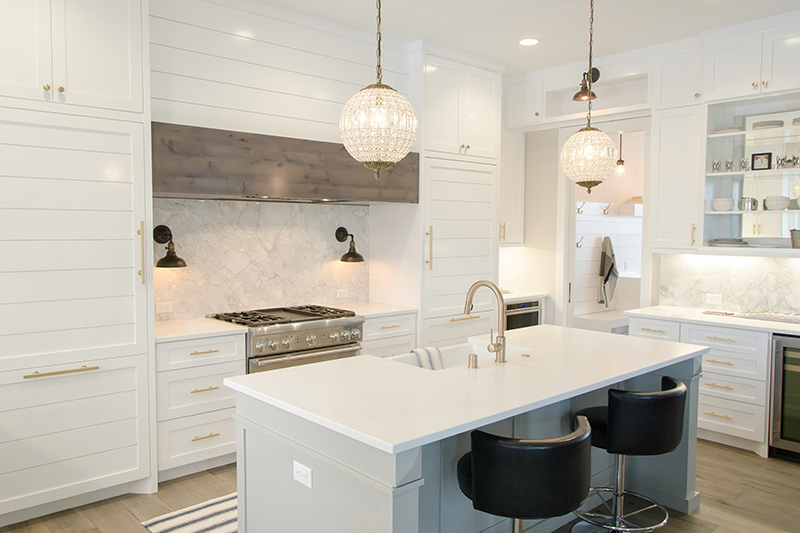
3. Put Better Lighting Inside & Outside Your Rental Home
Lighting is a big part of attractive rental property. Start with the exterior lighting, and make sure there’s enough of it. Your residents want to feel safe at night, and you’ll want to be sure exterior doors, walkways, and parking areas are well-lit and easy to see from the street or inside the property.
Inside the home, make sure the lighting is bright and modern, especially in the kitchen and the bathrooms. Ceiling fans are popular, especially in bedrooms and living rooms. Take a good look at your lighting and make upgrades wherever you can. It doesn’t have to be expensive, and it will make your home look great.
- Kitchen Pendant Lighting: Replace outdated kitchen lighting with modern pendant lights above the island or dining area. This not only enhances visibility but also serves as a decorative focal point, elevating the overall kitchen aesthetics.
- Bathroom Vanity Lighting: Upgrade bathroom lighting with stylish fixtures, such as chic vanity lights or sconces. These additions provide focused and flattering illumination for grooming tasks while enhancing the bathroom’s overall design.
- Statement Chandeliers: Consider installing statement chandeliers in dining rooms or entryways to create a striking visual impact. Choose designs that complement the overall style of the home, adding a touch of luxury and personality.
- Motion-Activated Lights: Install motion-activated lights along walkways, entry points, and parking areas. These lights automatically illuminate when motion is detected, improving security and reducing energy consumption.
- Solar-Powered Landscape Lights: Opt for solar-powered landscape lights to illuminate gardens and outdoor spaces. These eco-friendly lights not only contribute to sustainability but also eliminate the need for additional wiring, making installation hassle-free.
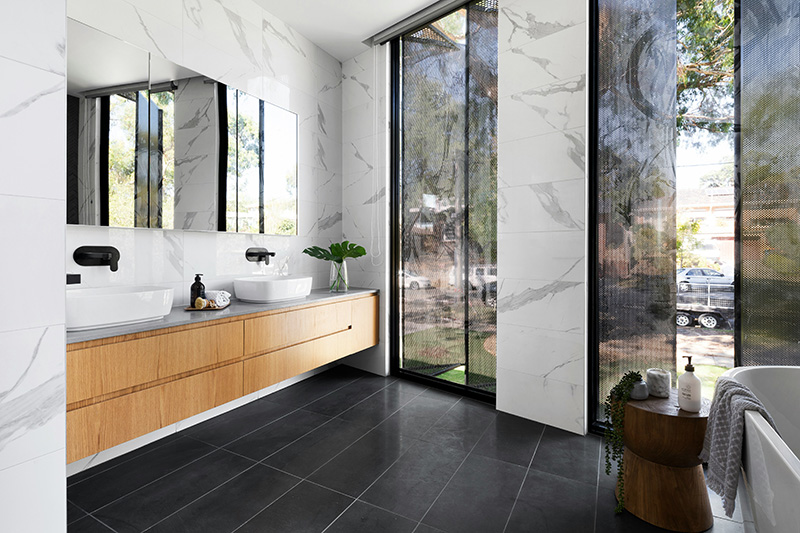
4. Invest in Modern Bathrooms
Bathrooms play a significant role in tenant satisfaction and make for a worthwhile rental renovation. An up to date bathroom can enhance both aesthetics and functionality.
Here are some modern bathroom renovation ideas:
Lighting Makeover: Replace outdated fixtures with energy-efficient LED lights. Consider adding task lighting near mirrors for better visibility.
Faucet, Sink & Showerhead Upgrades: Swap old faucets for sleek, modern designs. Install undermount sinks for a seamless look. Install a modern showerhead for more satisfying showers.
Flooring Revamp: Tile floors are durable and easy to clean. Opt for neutral colors to appeal to a broader tenant base.
Heated Flooring: Consider installing heated flooring systems controlled by smart thermostats. This luxurious addition provides warmth during colder months, creating a more comfortable environment for tenants.
Low-Flow Toilets and Faucets: Install low-flow toilets and faucets to reduce water consumption. This not only aligns with sustainability goals but can also lead to lower water bills for tenants.

5. Smart Home Upgrades
In today’s digital age, smart home upgrades are more than just a trend—they’re a savvy investment for landlords. Here’s how integrating cutting-edge technologies can enhance rental properties and boost their rental income:
Smart Thermostats: These intuitive devices allow tenants to control heating and cooling remotely. Energy-efficient temperature management not only reduces utility costs but also attracts eco-conscious renters.
Smart Appliances: Invest in smart refrigerators, dishwashers, and ovens that can be monitored and controlled remotely. These appliances not only add a modern touch to the kitchen but also contribute to energy conservation.
Security Systems: From smart doorbell cameras to motion sensors, enhanced security features provide peace of mind. Tenants value safety, and properties equipped with these systems can command higher rents.
Lighting Controls: Smart lighting systems offer customizable ambiance and energy savings. Imagine adjusting lights with a voice command or setting schedules for optimal comfort. Such conveniences make a property stand out.
By incorporating these technologies, landlords create a modern, efficient, sustainable living environment. The result?
Increased rent amounts and satisfied tenants who appreciate the seamless blend of comfort and innovation.
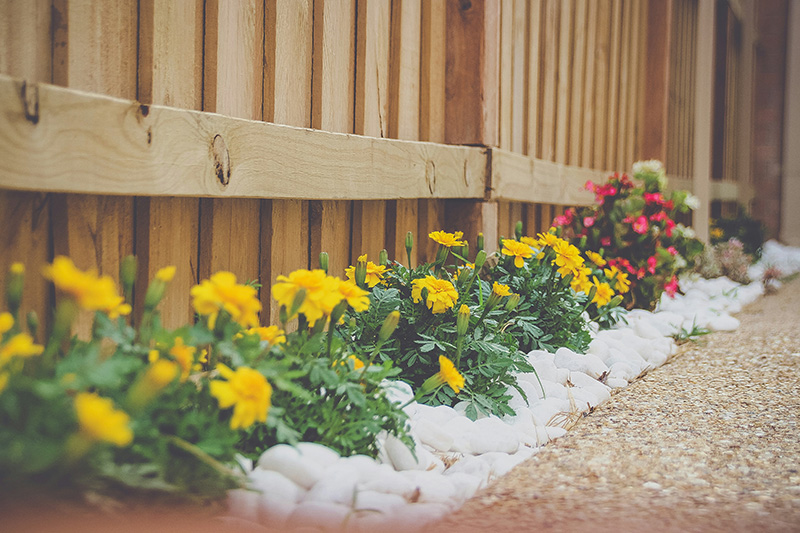
6. Budget-Friendly Landscaping Improvements
Landlords can enhance curb appeal and create inviting outdoor spaces without breaking the bank. Here are some cost-effective landscaping ideas to add to your rental renovation project:
Add a Walkway: Stepping stones or pavers create an elegant walkway, drawing attention to specific areas. Soft moss or plants can spruce up these budget-friendly paths.
Choose Perennials: Planting perennials (like tulips, asters, and daylilies) saves money and effort, as they return with color every growing season.
Spread Mulch: Mulch not only adds texture to flower beds but also keeps weeds at bay. Mulch also locks in moisture and enhances plant health with little ongoing effort.
Herb Container Garden: Set up a communal herb garden using affordable containers. Provide tenants with basil, mint, parsley, and other culinary herbs that are easy to grow in pots. This not only adds visual appeal but also encourages sustainable and cost-effective cooking.
Vertical Pallet Gardens: Transform unused pallets into vertical gardens. Attach small containers or pockets to the pallet boards, allowing tenants to grow flowers, herbs, or small vegetables vertically. This space-saving solution adds a touch of greenery to walls or fences.
Pallet Furniture Lounge: Construct lounge furniture using pallets as a cost-effective alternative to traditional outdoor seating. Add cushions or weather-resistant fabrics for comfort and style.
Crate Coffee Tables: Arrange wooden crates into coffee tables for communal outdoor spaces. Paint or stain the crates for a customized look, and top them with a weather-resistant surface like plexiglass or a reclaimed door for a practical and charming touch.
7. Energy-Efficient Renovations
Eco-friendly renovations go beyond saving the planet — they also boost your bottom line. Here’s why landlords should consider energy-efficient upgrades:
Reduced Operating Costs: By investing in energy-efficient appliances, insulation, and solar panels, landlords can significantly lower energy consumption. Lower utility bills mean more money in your pocket and happier tenants.
Tenant Satisfaction and Retention: Environmentally conscious renters appreciate eco-friendly features. When tenants see reduced energy bills, they’re more likely to stay long-term.
Increased Property Value: Energy-efficient properties are more attractive to potential tenants. Plus, they may command higher rental rates due to their green credentials.
Here are some examples of energy-efficient renovations you can make to your rental home:
- Upgrade Appliances: When replacing appliances, choose energy-efficient models. Look for the ENERGY STAR label.
- LED Lighting: Replace incandescent bulbs with LED bulbs for longer life and reduced energy consumption.
- High-efficiency Water Heater: Tankless or heat pump water heaters are excellent options. Insulate hot water pipes to minimize heat loss during distribution.
- Install Low-Flow Faucets: Save water by installing low-flow faucets in the kitchen sink.
- Smart Thermostat: Install a programmable thermostat to optimize heating and cooling based on occupancy.
- Insulate: Add insulation in the attic or walls to improve energy efficiency.
- Weatherstripping: Replace worn-out weather stripping around doors and windows to prevent drafts.
- Seal Gaps: Check for gaps around windows and doors, and seal them to prevent heat loss or gain.

8. Pet-Friendly Property Makeovers
Pet-friendly renovations aren’t just for the four-legged residents—they’re a smart move for landlords too. You’ll attract a broader base of prospective tenants and create a comfortable living environment for the growing proportion of renters with pets in BC.
Here’s how to renovate your rental property to make it more pet-friendly:
Outdoor Oasis: Designate a pet-friendly outdoor space—a small fenced yard or a balcony with artificial grass. Tenants with furry friends will appreciate a safe spot for playtime.
Built-In Pet Amenities: Consider a pet door, pet washing station, and built-in pet beds, cat shelves & hideaway litter boxes.
Pet-friendly Flooring: Opt for pet-friendly flooring materials like scratch-resistant laminate, vinyl, or tile. Say goodbye to carpet stains & lingering smells.
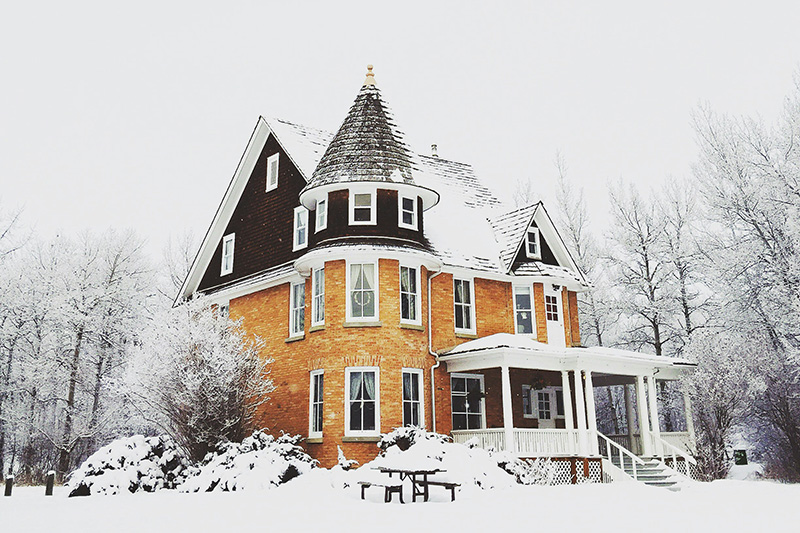
9. Prepare Your Rental Properties for Winter
As winter approaches, landlords can take steps to prepare rental properties for the colder months. Proactive winterization keeps tenants cozy, secures their right to reasonable enjoyment of the rental property, and protects your investment.
Here’s how you can ensure tenant satisfaction throughout Canada’s cold winter months:
Check insulation: Inspect walls, attics, and crawl spaces. Proper insulation keeps the cold out and reduces energy bills.
Seal gaps: Caulk around windows and doors to prevent drafts and maintain comfortable indoor temperatures.
Pipe insulation: Wrap exposed pipes to prevent freezing and bursting.
Service the furnace: Arrange professional maintenance. Clean filters and ensure efficient heating.
Test the heat: Turn on the heat early to identify any issues before winter hits.
Bleed radiators: Remove trapped air for even heating.
Snow and ice removal: Clarify responsibilities with your tenant. If you own a multi-family building, keep walkways safe for tenants with proactive snow and ice removal.
Garden prep: Trim trees, cover outdoor furniture, and drain hoses.
10. Put a Backsplash in the Kitchen
Kitchen remodels are expensive. Instead of re-doing the entire space, consider something small that will have a big impact. There are many creative backsplashes on the market right now, and something shiny and contemporary will get the attention of potential renters. You will only have to buy enough materials to cover a small space, and for the investment, you’ll get a lot back.
These are some of the most simple and cost-effective renovations Canadian landlords can make to their rental properties. If you need any help with property management in the Okanagan Valley, please contact our team at Vantage West Property Management.
Read on to learn about the tax implications of renovations, and the tax implications of a current and capital expense.
The Tax Benefits of Home Renovations for Landlords in Canada
According to Canada Revenue Agency (CRA) guidelines, home renovations can be categorized as either capital expenses or current expenses for landlords. Let’s delve into the details.
Please consult a tax professional (CPA) for tax advice in Canada.
Renovations Considered as a Capital Expense
Capital expenses are costs related to renovations or improvements that extend the useful life of your property or enhance it beyond its original condition. A capital expense generally provides a long-lasting benefit.
Typical Capital Expense Examples:
- Replacing wooden steps with concrete steps.
- Upgrading the roof or windows.
- Installing a new furnace or central air conditioning system.
Capital Expense Tax Implications:
- Capital expenses are not immediately tax deductible in the year incurred.
- Instead, landlords can claim capital cost allowance (CCA) over several years. It’s a long-term tax benefit that spreads the expense over time.
- CCA allows you to depreciate the cost of the improvement, reducing your taxable rental income.
- Capital expenses increase the cost base of the property for capital gains tax purposes. When you sell the property, the capital gain is calculated by subtracting the adjusted cost base (including capital expenses) from the sale price.
Renovations & Improvements Considered as a Current Expense
Current expenses are recurring costs that maintain or restore the property to its original condition.
Examples of Current Expenses:
- Regular repairs (e.g., fixing a leaky faucet).
- Routine maintenance (e.g., painting the exterior).
- Minor replacements (e.g., light bulbs, locks).
Current Expense Tax Implications:
- Current expenses incurred are deductible in the year incurred.
- They directly reduce your taxable rental income.
- Claim these expenses annually on your tax return.
Tax Implications of Renovations for Landlords
- Reduced Tax Liability: By treating capital expenses as CCA, you can lower your taxable income as a landlord, resulting in lower payable taxes to the Canada Revenue Agency. Landlords can typically deduct property tax, legal or accounting fees, and other eligible current expenses from their rental income to further optimize their tax position.
- Capital Gains Tax Reduction: When you eventually sell the property, the adjusted cost base (including capital expenses) reduces the capital gains tax payable.
It’s crucial to consult with a tax professional for personalized advice and to ensure compliance with specific tax regulations in Canada.
Remember to keep detailed records of all expenses and explore the specific tax rules applicable to your situation. Renovations can be a strategic move to improve your rental property’s value and financial outlook.
